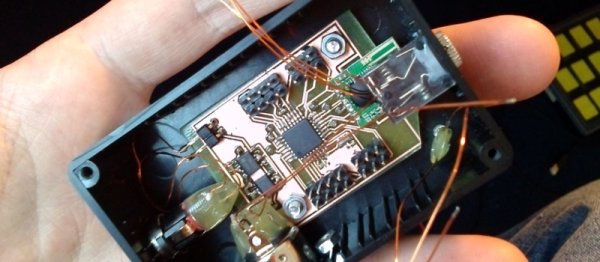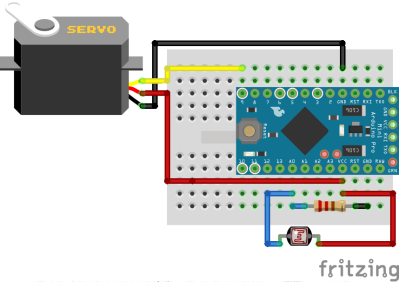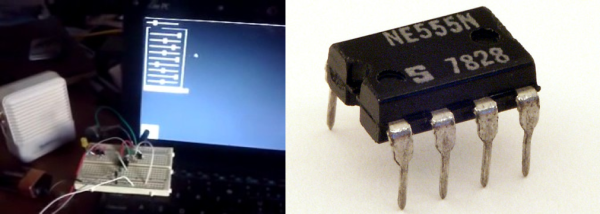[acidbourbon] had some cool parts on hand, and a musician friend in need of a radio-controlled, touch-sensitive MIDI (and analog) controller. This being Hackaday, you can guess what happened next.
The remote expression controller is a sweet little hack. It starts with a touchpad bought from a German surplus shop, and some code that [acidbourbon] found on the biggest German embedded forum. A couple nicely home-etched circuit boards later, and he was writing code.
It’s all available here on his GitHub if you want to have a look. The transmission protocol is simplicity itself. It sends a two-byte header to detect the start of the message, and then it sends three bytes of data. The receiver turns this into MIDI and control-voltage output. Simple and useful.
We also admire the non-overkill (as well as the enviable battery life) of using straightforward radio transmitters rather than giving in and using WiFi.
We’ve covered some of Michael/[acidbourbon]’s hacks before, and the one that we think of the most, when we’re down in the basement drilling out holes in a PCB, is his semi-automatic drill press hack. Keep on hacking!























